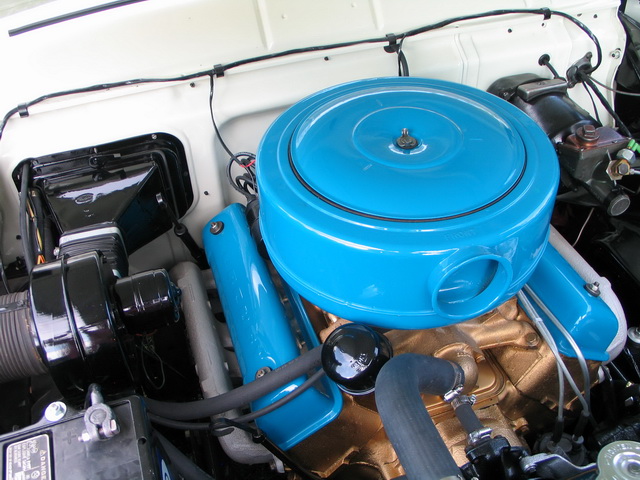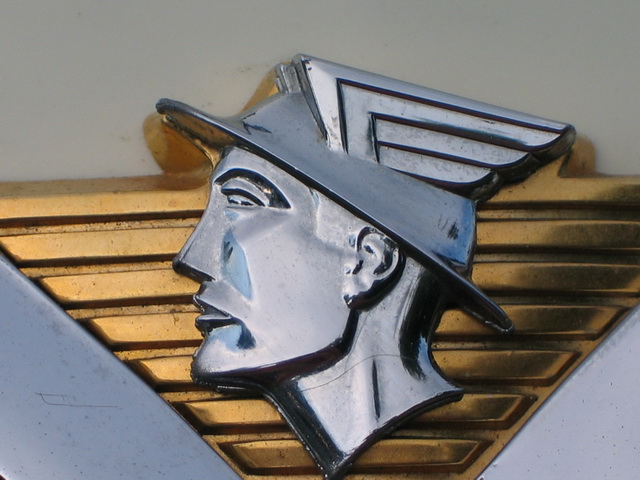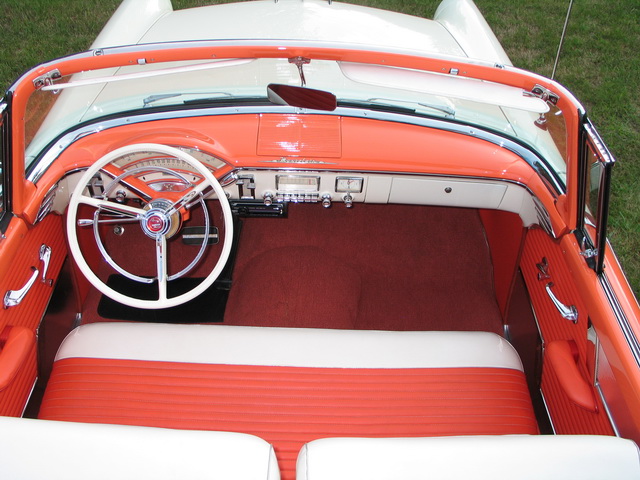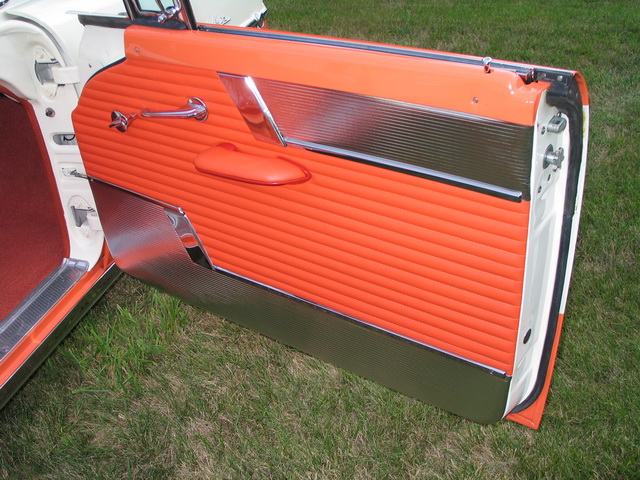1956 MERCURY MONTCLAIR NO 19
The Monclair was the top of the Mercury line in 1956. It features bright colours, new styling, higher grade trim and more standard equipment. It also had an engine that could eat up the competition. As a matter of fact, a Mercury Montclair won five (5) NASCAR Races in 1956.
Finished in Persimmon Orange / Classic White two tone with an all new matching interior
New black Haartz cloth power top. Wheelbase: 119in (3023mm)
Completely rebuilt drivetrain including the 312 V8, 210 HP 2 bbl Merc-O-Matic Auto trans
Outfitted with a Continental Kit Fender skirts New chrome
Power steering power brakes AM Radio
Wide whitewall tires (AKA: “Gangster Whites”). MSRP: $2950.00
Mercury
During the mid-1930’s, despite the continuing success of the new V-8, Ford Motor Co was in danger of being left at a competitive disadvantage to both of its largest competitors. Both GM and Chrysler had a complete line of models aimed at every price range but not Ford. In 1935 Ford only sold its base model Ford and the high priced cars of Lincoln Motor Co. Aside from the Cadillac V-16, Packard 12, and the Duesenberg Model J, the Lincoln Model K was the most expensive vehicles on the road. There was a vast gap to be filled between these two extremes.
What was needed was an “in-between” car priced with-in reach of moderately upscale buyers. There was much discussion about the name to bestow on this new vehicle and whether it should be a part of Ford or its own brand. Unlike the Packard 120 which was introduced as a low priced Packard, Ford followed GM’s plan for the LaSalle before it and introduced the Mercury has its debut as its own brand.
In the 1939 model year, Mercury made its debut as an all new car sharing no body parts with Ford or Lincoln. It was wider (6”) than the `39 Ford and 4 inches longer (116 in wheelbase) than the Ford but shared the 239 cid Ford Flathead V8 in place of developing an engine of its own. At a starting price of $916.00, over 65,000 Mercury’s were sold that first year.
Before the war, Mercury came to utilize much of the Ford body shell in its cars but they sat on a four-inch longer wheelbase. In the shortened 1942 model year, the Mercury Eight introduced the first semi-automatic transmission (Liquidmatic) to Ford Motor Co.
The same models, the same designs were re-introduced in 1946 at the war’s end. Also, Mercury and Lincoln were combined into one division, with both brands keeping their own identity while sharing various body panels.
The mid-1950’s was becoming the heyday of the Lincoln-Mercury Div. Although still sharing the same body shell, there was a differentiation inside the Division with the introduction of the Mercury Custom, Monterey, and, in 1955 the high end Mercury Montclair (see the Lang Collection’s 1956 Montclair). With the replacement of the long running Flathead V8 (from 1932) by an overhead-valve Y-Block V8 developing 218 HP from 314 cu in, the Montclair became a real street rod but with a touch of luxury. Based on its success in the 1956 NASCAR Racing Circuit, the Montclair was invited to be the official pace car for the 1957 Indy 500.
Following the termination of the Edsel experiment in 1960, Mercury took steps to distinguish itself once again from Fords. Great Mercury name plates from over the years such as Marquis, Grand Marquis, Marauder, Comet, Cougar, Montego, Mariner, and eventually the luxurious Mountaineer are familiar names to auto aficionados. But sales declined so that by the time it was discontinued by Ford corporate, Mercury sales represented less than 1% of North American sales versus Ford Motors 16%. The last Mercury came down the line in 2010. Yes, it was fun while it lasted





